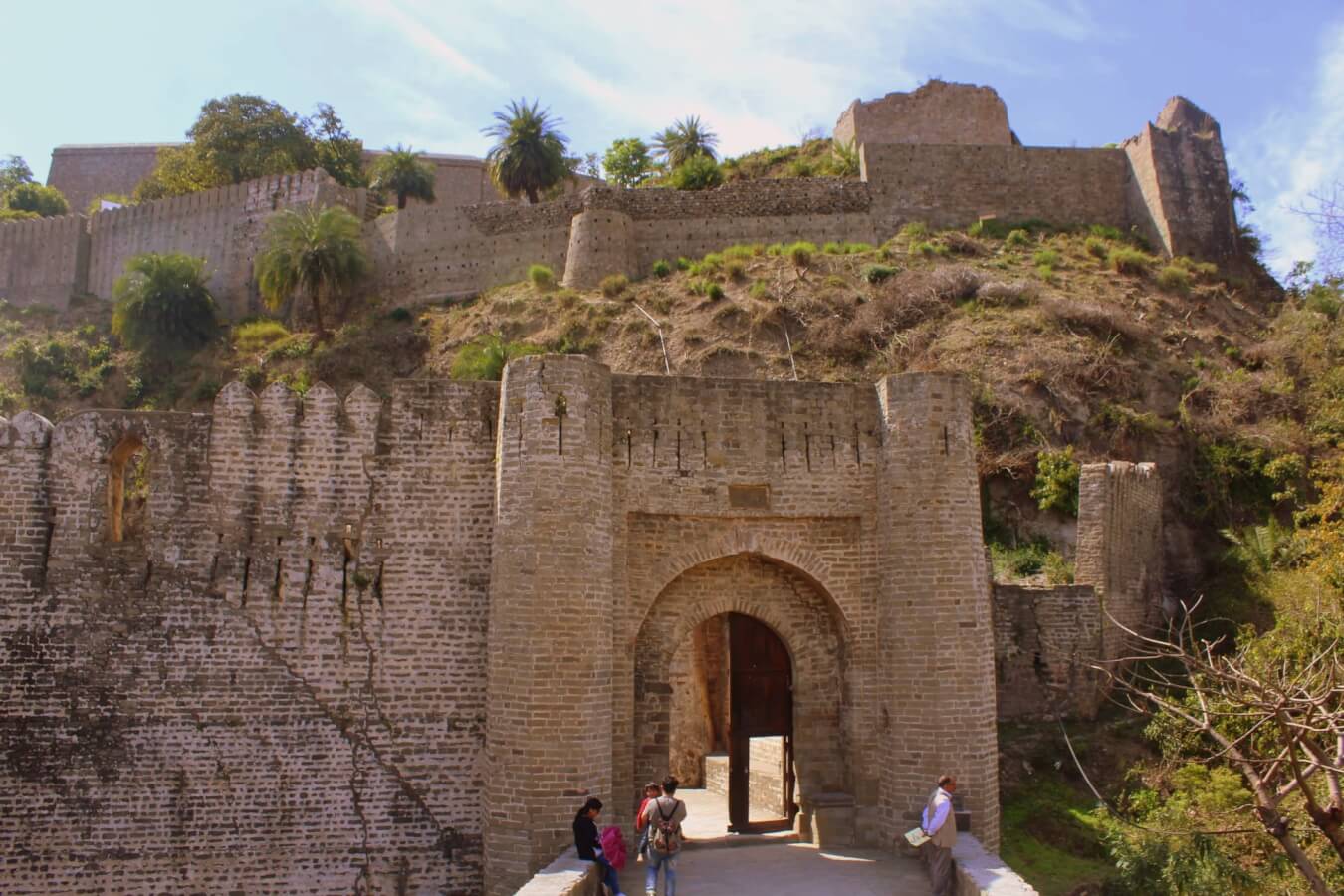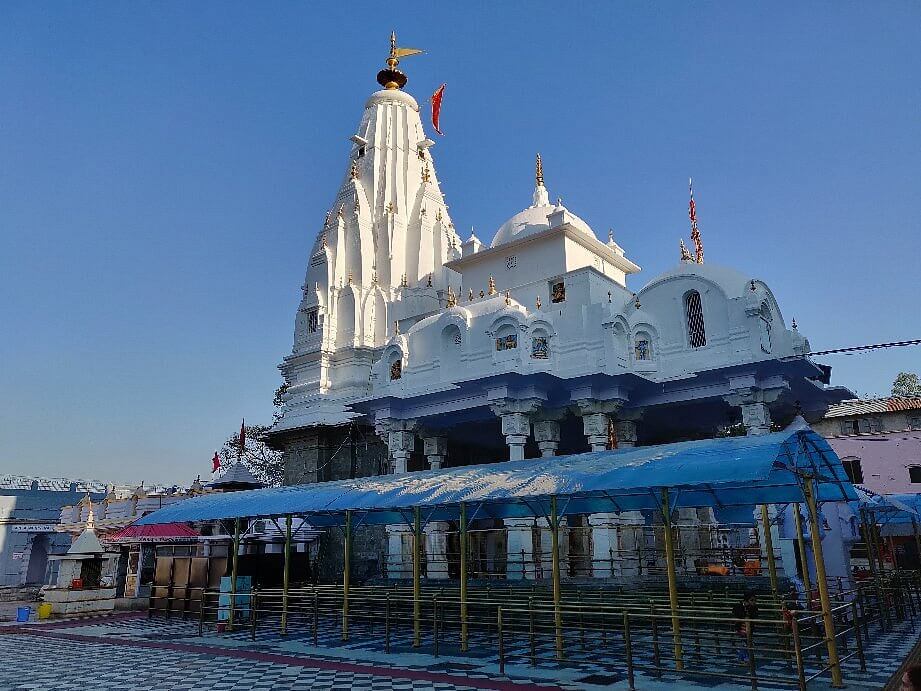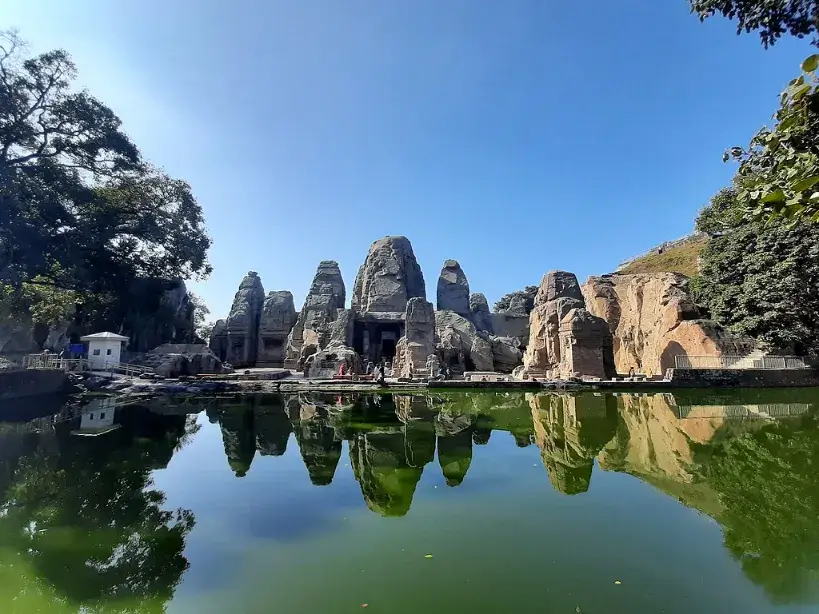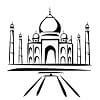- Home
- Holiday Ideas
-
-
- Choose Your Traveling Theme
-
- Adventure Tourism
-
- Cultural Tourism
-
- Tour Packages
-
-
- Packages by State
-
- Holidays by Interest
-
- Popular Tour Packages
-
- Fair And Festivals
-
- Ayurveda And Yoga
-
- Offers
-
- Destinations
-
Kangra
In nature's lap
Kangra
From one among the oldest forts within the country to exhilarating and challenging treks, small but charming Kangra in Himachal Pradesh, carves a distinct segment for itself among hill towns. Nestled within the Kangra Valley, between the Dhauladhar and Shivalik ranges, Kangra has an unparallelled beauty and artistic heritage that are punctuated by its opulent temples and bustling bazaars. The exquisite Kangra paintings, renowned everywhere the planet for his or her brilliant colours and complex decorative detail, are sort of a cherry on the highest for art-lovers.
...The city is additionally home to a shaktipeeth (devotional shrine where the body parts of Goddess Shakti fell), the Brijeshwari Temple that sees an outsized number of footfalls throughout the year. The Kangra Fort, which has been a centre point of thousand years of grandeur, invasion and war within the region, is among the prime attractions here.
A short distance from Dharamsala, a hub of trekking, Kangra remains one among the foremost sought-after destinations in Himachal Pradesh.
How to get there ?
By Air
The nearest airport is Gaggal airport, 14 km away from Kangra.
By Road
There are regular buses available to Kangra from other major cities.
Rail
The nearest railhead is Pathankot, 90 km away from Kangra.
Attractions in Kangra

Kangra Fort
Head to at least one of the oldest forts in India to urge a virtual experience of your time travel. the right blend of rich history and scenic beauty, the Kangra Fort lies on a patch of land between the Manjhi and Banganga rivers. Built by the kings of Katoch, one among the oldest living dynasties, the fort is claimed to be the most important fort within the Himalayas. Its strategic position atop a hill, overlooking the encompassing areas made it particularly prominent.
From the fort, enjoy open vistas of the hilly landscape, arid at places and plush at others. Stand on its ramparts and looked at the encompassing craggy peaks to know why it had been considered impregnable at one time!
Exploring the fort will take you straight into the pages of history. Surrounded by majestic gateways and doors, it boasts vast courtyards and ancient temples within its premises. an honest solid hour would be enough to require a tour round the fort. However, to know the appeal that drew Hindu rulers, Mughal and Sikh conquerors and later British over different periods of your time , would take ages. Today, tourists enjoy a brief climb to the highest of the fort to drink spectacular sights. it’s an honest opportunity for photography also . to urge a more comprehensive overview of the fort’s history, visitors can head to the Maharaja Sansar Chand Katoch Museum, situated right next to the fort.
Brijeshwari Temple
Located within the old township of Kangra, the Brijeshwari Temple was once renowned for its immense wealth that drew rulers and plunderers from far and wide. Dedicated to Goddess Vajreshwari, a sort of Durga, the temple is revered together of the 51 shaktipeethas within the country. it’s believed to possess been constructed over the spot where the breast of Goddess Sati fell. Legend has it that when Goddess Sati’s father organised a yajna (a fire ritual) and he did not invite his son-in-law, Lord Shiva, to the ceremony. Insulted by this, Sati immolated herself within the yajna. Bereaved, Lord Shiva took her lifeless body in his arms and began doing tandava, the dance of cosmic destruction. Afraid that he would annihilate everything in his path, Lord Vishnu shredded Sati’s body together with his chakra. it’s said that wherever her severed body parts fell, a shrine or shaktipeetha was created.
The temple houses a gorgeous silver idol of the goddess. A bustling bazaar lined with prasad (devotional food offering) shops leads you to the gorgeous white temple, which lies in close proximity to the Kangra Fort. consistent with popular legend, the temple was built by the Pandavas of the epic Mahabharata after Goddess Durga appeared in their dream and ordered them to create a shrine at Nagarkot for his or her safety.


Masroor Temple
Very rarely do i encounter a temple as unique because the Masroor Temple, in Himachal Pradesh. Popularly referred to as the Himalayan Pyramid, the temple complex is a crucial archaeological site dating back to the 8th and 9th centuries. it’s a cluster of 15 rocks that are carved out of one rock. Located 40 km west of Kangra, this temple complex is popular for its distinguished architecture. As you enter the complex, you’ll be left mesmerised by the gorgeous sight of the temple getting reflected within the Masroor Lake, located nearby. inbuilt the shikhara (spire) sort of architecture, the rock-cut temples are perched at a height of two ,500 ft above water level . The 14 temples of the complex are cut from the surface but the central one from the within . the most sanctum sanctorum houses idols of Lord Rama, Lord Lakshmana and Goddess Sita. The temple complex is now referred to as Thakurwada, which suggests Vaishnavite temples. The walls, doors, lintels and spires boast intricate sculpting details also as figurines of gods and goddesses. it’s believed that the temple was originally dedicated to Lord Shiva as there’s a figure of the deity on the central lintel. The temple shares a stark resemblance with the temples at Cambodia’s Angkor Wat, Mumbai’s Elephanta Caves and Mahabalipuram.
WANT TO RENT A CAR IN INDIA ?
Choose Your Traveling Theme

 TOUR BOOKING
TOUR BOOKING















